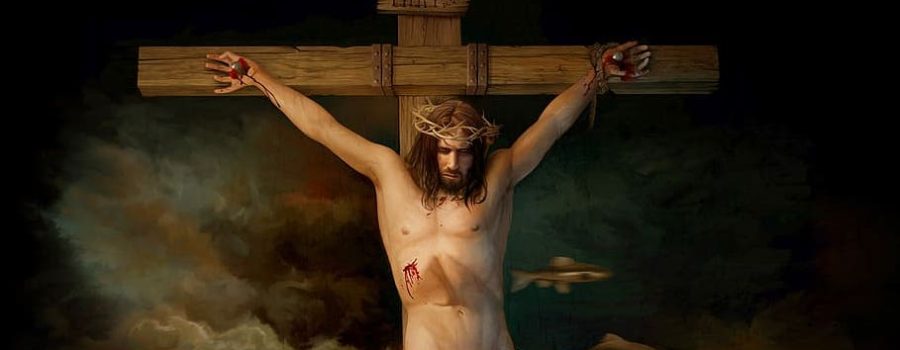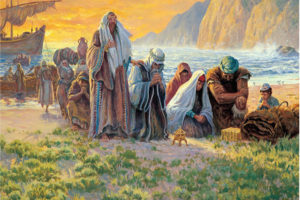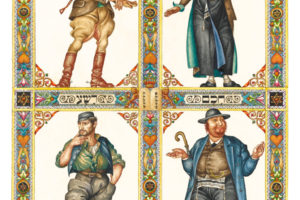According to Christian tradition, Yeshua was crucified on a Friday commemorated as “Good Friday.” This common misunderstanding occurs because of the documented rush to bury Yeshua before the approaching sabbath (see Mark 15:42, Luke 23:54-56, John 19:41-42). Because the weekly sabbath starts at sundown on Friday (the 6th day of the Hebrew week), and continues through sundown on Saturday (the 7th day of the Hebrew week), and because the record reports Yeshua was crucified on the day before the sabbath, Christian tradition has assumed this was Friday, and built the “Good Friday” tradition around this assumption, starting in the 4th century.
But this was a mistake.
In fact, there are other days called “sabbath” that were not the seventh day of the week. These are known as “annual” sabbaths, because these holy days occur once each year. The first day of the feast of unleavened bread (also called Passover) is such a day. In the year that Yeshua died, this day, the 15th of Nisan, fell on a Friday, and the usual, weekly sabbath fell on the next day, Saturday. Therefore, there were back-to-back sabbaths that week, as can happen when one of the annual sabbaths falls on a Friday.
That Yeshua was crucified on a Thursday may be seen in Luke 24, where we read the following:
[1] Now upon the first day of the week, very early in the morning, they came unto the sepulchre, bringing the spices which they had prepared, and certain others with them.
The account clearly states that the items in the following narrative all took place on the first day of the week, or Sunday.
[13] And, behold, two of them went that same day to a village called Emmaus, which was from Jerusalem about threescore furlongs.
[14] And they talked together of all these things which had happened.[18] And the one of them, whose name was Cleopas, answering said unto him, Art thou only a stranger in Jerusalem, and hast not known the things which are come to pass therein these days?
[19] And he said unto them, What things? And they said unto him, Concerning Jesus of Nazareth, which was a prophet mighty in deed and word before God and all the people:
[20] And how the chief priests and our rulers delivered him to be condemned to death, and have crucified him.
[21] But we trusted that it had been he which should have redeemed Israel: and beside all this, to day is the third day since these things were done.
[22] Yea, and certain women also of our company made us astonished, which were early at the sepulchre;
[23] And when they found not his body, they came, saying, that they had also seen a vision of angels, which said that he was alive.
[24] And certain of them which were with us went to the sepulchre, and found it even so as the women had said: but him they saw not. (Luke 24 KJV, emphasis added)
This was Sunday, the first day of the week, called in the narrative the “third day since these things were done.” Counting backwards then, Saturday was the second day since the crucifixion, Friday was the first day since the crucifixion, and Thursday was the day of the crucifixion.
The Stick of Joseph also maintains a Thursday crucifixion. Sh’mu’el the Lamanite prophesied as follows:
But behold, as I said unto you concerning another sign, a sign of his death, behold, in that day that he shall suffer death, the sun shall be darkened and refuse to give his light unto you, and also the moon and the stars. And there shall be no light upon the face of this land, even from the time that he shall suffer death, for the space of three days, to the time that he shall rise again from the dead. (Cheleman 5:13)
The Gospels record that Yeshua died at mid-afternoon in Yerushalayim. However if we allow about eight hours time difference between the continents, then this was about 7:00 AM in Zerach’mla. Samuel said the darkness would last from the death of Messiah until he arose three days later. This means the darkness prevailed all of Thursday, Friday and Saturday, with light returning Sunday.
Mark and Luke tell us that darkness in Jerusalem prevailed three hours from the sixth to the ninth hour (around noon to 3:00 PM), during which time the earth shook and the Temple veil was rent.
In Zerach’mla the three hours would have been early morning (around 4:00 AM to 7:00 AM), during which time earthquakes and storms devastated the land. Following the devastation, three days of darkness ensued:
And it came to pass that when the thunderings, and the lightnings, and the storm, and the tempest, and the quakings of the earth did cease — for behold, they did last for about the space of three hours; and it was said by some that the time was greater, nevertheless, all these great and terrible things were done in about the space of three hours — and then, behold, there was darkness upon the face of the land…. And it came to pass that it did last for the space of three days that there was no light seen; and there was great mourning, and howling, and weeping among all the people continually,… (3 Nefi 4:3, 5)
Then at the end of that time:
And it came to pass that thus did the three days pass away. And it was in the morning and the darkness dispersed from off the face of the land, and the earth did cease to tremble, and the rocks did cease to split, and the dreadful groanings did cease,… (3. Nefi 4:10)
Thus, the Stick of Joseph requires a Thursday crucifixion, to account for three days of darkness while Yeshua was in the tomb. This aligns perfectly with the peculiarity of that year on the Hebrew calendar, in which two sabbaths fell back-to-back on Friday and Saturday. The Stick of Joseph and the other scriptural records tell the same story.
In Yosef ben Yosef’s day, the gentile Christian world had mistakenly assumed a Friday crucifixion, and had built Good Friday observance on this tradition. Yosef ben Yosef could not have known that Yeshua was actually crucified on a Thursday and that the Sabbath that followed was not the weekly Sabbath at all, but the first day of the Feast of Unleavened Bread (Passover), which was an annual Sabbath. The Stick of Joseph got it right, even against Christian tradition that had stood since the 4th century CE.
This is yet another evidence that the Stick of Joseph is an authentic ancient Jewish document.






6 Comments
Leave your reply.